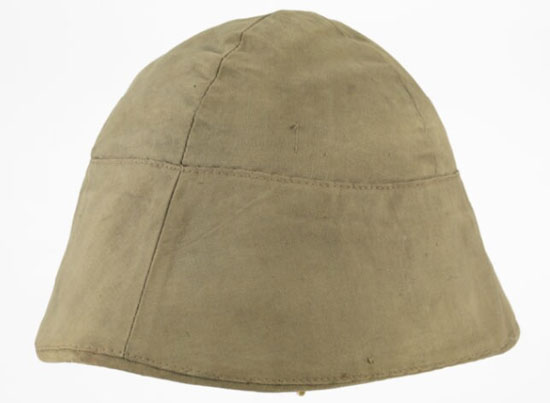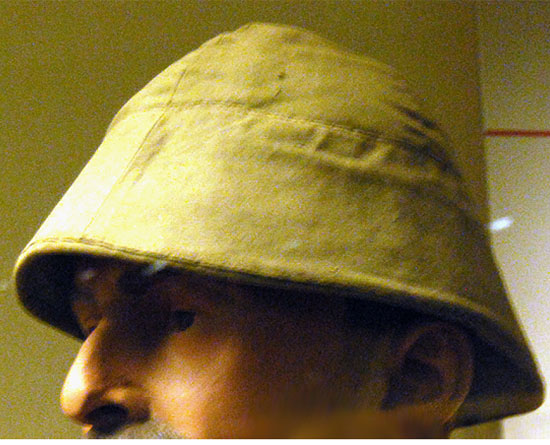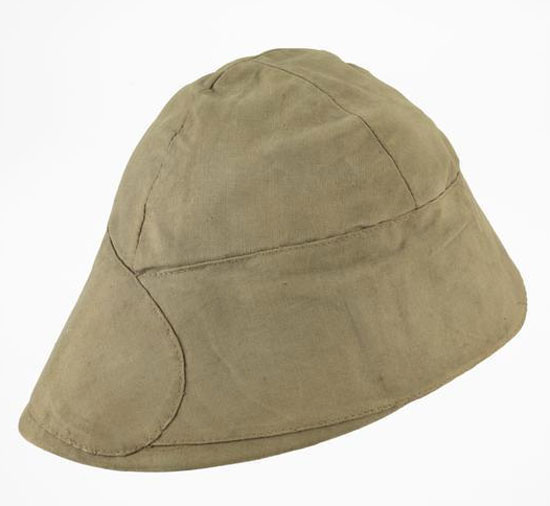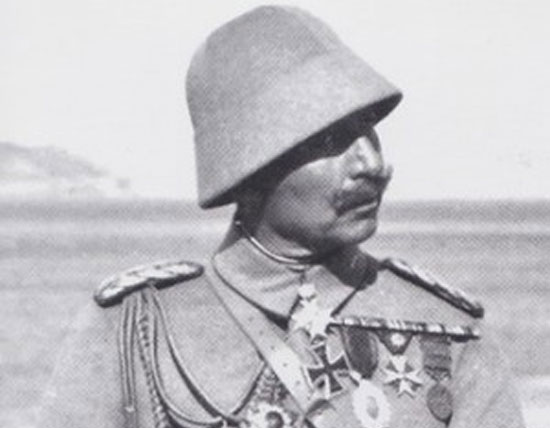
Photo: Imperial War Museum
Today the sun helmets and other tropical headgear utilized by the Ottoman Empire before and during World War I remains somewhat of a mystery. One factor that is so few pieces have survived and the photographic evidence suggests that a variety of patterns were used.
Our colleague and friend Dr. Chris Flaherty chronicled the various patterns for these, but now a new photo and some insight from the Imperial War Museum may shed a bit more light on the Ottoman “Sun Helmet.”
Generally, all Ottoman sun helmets have been lumped under the banner of “kabalak,” but as our friend Dr. Flaherty noted this is simply not the case. There were distinctive patterns and all shouldn’t dubbed “kabalak.”

The above one helmet that is in the collection of the Imperial War Museum is noted as follows:
Label
Worn by Muzalim-l-Sani (2nd Lieutenant) Abedine Houchemi of the 2nd Turkish Infantry Regiment. The 2nd Infantry served in the Gallipoli peninsula during the British landings, and later went to Syria where Houchemi deserted, surrendering himself to the Allies.
Physical description
Headdress Lightweight helmet style headdress comprising a light khaki cover over a wickerwork frame.
History note
Worn by Muzalim-l-Sani (2nd Lieutenant) Abedine Houchemi of the 2nd Turkish Infantry Regiment. The 2nd Infantry served in the Gallipoli peninsula during the British landings, and later went to Syria where Houchemi deserted, surrendering himself to the Allies.

Side view of the “sun hat” (Photo: IWM)
Further this items is noted as follows:
Full name: Helmet, Kabalak (or Enveriye): Officer’s, Turkish Army
simple name: Headdress: Turkish
It isn’t clear why this is listed as a “kabalak” at all, but perhaps this is due to a misunderstanding. As Dr. Flaherty has noted, it should be more accurately be called a sun helmet or sun hat, and this was in fact an alternative to the kabalak.
The question has been when was this helmet and introduced. It differs greatly from the pattern of helmets used during a visit of Kaiser Wilhelm II of Germany to Palestine. As we have noted previously the Kaiser wore a variety of specially made tropical uniforms and there is even a helmet that is purported to be his helmet for this trip.
However, another photo has appeared that shows the Kaiser wearing a helmet very similar in design to the one in the IWM. According to Dr. Flaherty that helmet was worn by Kaiser Wilhelm II as part of the uniform of an Ottoman Imperial Army Marshal, when the German ruler visited Constantinople and Gallipoli in October, 1917 – more than a year and a half after the end of the battle.

Kaiser Wilhelm II, wearing the uniform of an Ottoman Imperial Army Marshal, when touring Constantinople and Gallipoli in October, 1917
This suggests that the helmet may have been introduced during the war as an alternative to the kabalak.
Obviously, more research is required but this casts some new light in what remains a fascinating subject.
